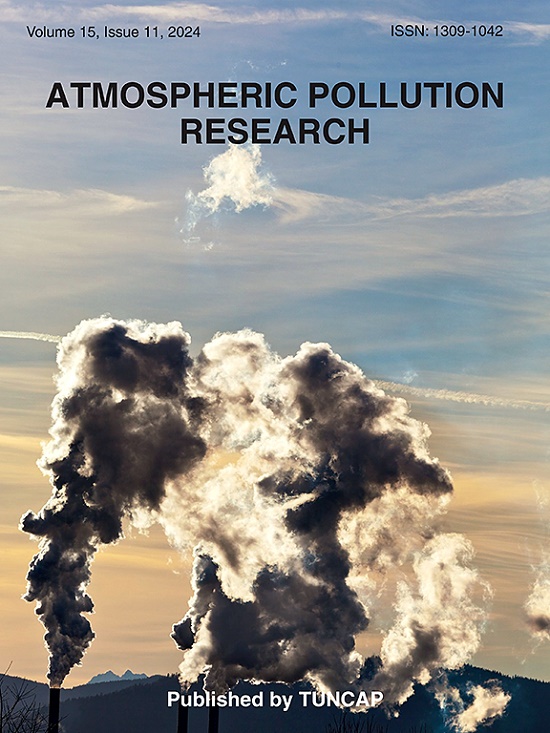A simple and robust method for the comprehensive analysis of VOCs in liquid household products
IF 3.9
3区 环境科学与生态学
Q2 ENVIRONMENTAL SCIENCES
引用次数: 0
Abstract
Household products contain a substantial amount of dissolved volatile organic compounds (VOCs), which nowadays contribute significantly to VOC emissions in cities. Particularly, floor cleaners (FC) are among the most commonly used household cleaning products in developing and tropical countries. Here, we present the development of an affordable, cost-effective and robust sampling method that enables the speciation and accurate quantification of VOCs content in FCs by allowing the volatilisation of liquid samples without altering their composition. The VOC content was analysed in seven FC, where in 1-R-⍺-Pinene, (−)-β-Pinene, Terpinolene, Limonene, ɣ-Terpinene, (+)-Fenchyl alcohol, (−)-Camphor and (−)-Borneol, and Benzene, Toluene, p-Isopropyltoluene were identified and quantified. For the method developed we report: the sampling system design, blank analyses, speciation resolution, optimal sampling conditions, calibration curves of the quantified monoterpenes and aromatic compounds, recovery %, precision of the method as , and the limits of detection and quantification. The VOCs were collected in sampling tubes packed with Tenax TA® and analysed by thermal desorption with cryofocus and ballistic thermal desorption into a GC-MS.
Calibration curves for all compounds showed correlations of R2 > 0.990 between the instrument response and the concentrations of all quantified VOCs. The developed method exhibited an average recovery rate of 90%. The VOC concentrations in the analysed FCs ranged from 1 to 259 mg l−1 for benzene and limonene, respectively. The determined limits of quantification for all the sampled VOCs were higher than their respective limits of detection, confirming that the method is suitable for its intended use.

求助全文
约1分钟内获得全文
求助全文
来源期刊

Atmospheric Pollution Research
ENVIRONMENTAL SCIENCES-
CiteScore
8.30
自引率
6.70%
发文量
256
审稿时长
36 days
期刊介绍:
Atmospheric Pollution Research (APR) is an international journal designed for the publication of articles on air pollution. Papers should present novel experimental results, theory and modeling of air pollution on local, regional, or global scales. Areas covered are research on inorganic, organic, and persistent organic air pollutants, air quality monitoring, air quality management, atmospheric dispersion and transport, air-surface (soil, water, and vegetation) exchange of pollutants, dry and wet deposition, indoor air quality, exposure assessment, health effects, satellite measurements, natural emissions, atmospheric chemistry, greenhouse gases, and effects on climate change.
 求助内容:
求助内容: 应助结果提醒方式:
应助结果提醒方式:


